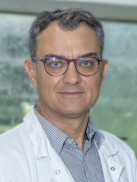 The Institute welcomed its first class of medical students for an introduction to research in the field of myology in April 2023. This week of training, which is part of the medical curriculum at Sorbonne University, was organised by Guillaume Bassez, neurologist and head of a research group in the Repeat Expansions & Myotonic Dystrophy (REDs) team. Interview with Guillaume Bassez
The Institute welcomed its first class of medical students for an introduction to research in the field of myology in April 2023. This week of training, which is part of the medical curriculum at Sorbonne University, was organised by Guillaume Bassez, neurologist and head of a research group in the Repeat Expansions & Myotonic Dystrophy (REDs) team. Interview with Guillaume Bassez
What was the context for this week with the students?
Sorbonne University’s Faculty of Medicine has set up a medicine/science course that allows students to pursue a scientific career in parallel with their 2nd cycle medical studies. Students have to take 4 introductory research courses of 30 hours each, spread over the 2nd and 3rd years of the 2nd cycle, leading to a Master 1. They can then continue their studies (Master 2, thesis) if they wish to go into research. This course has been running for a number of years, but this is the first time that the Institute of Myology has taken part.
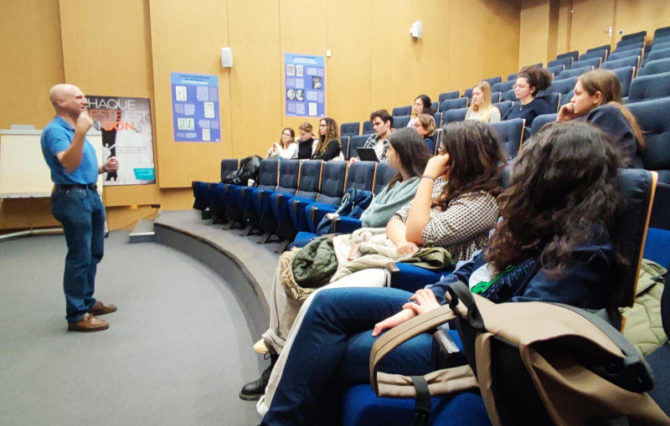 Why did you want to join this course?
Why did you want to join this course?
At the Institute, we’re very keen to promote myology, disseminate it and raise awareness of it, in particular through training and teaching via the DIU in myology and AcadeMYO in particular. We therefore applied to have myology included on this medical course and succeeded in obtaining the right to teach students at the end of their 3rd year, who therefore have a more in-depth knowledge of research and have completed the first 3 modules. In addition, we were granted a waiver to have only half a class, i.e. 17 participants (whereas usually there are 30 students per UE, sometimes 60), allowing us a more convivial organisation and more interaction.
How did you design the programme?
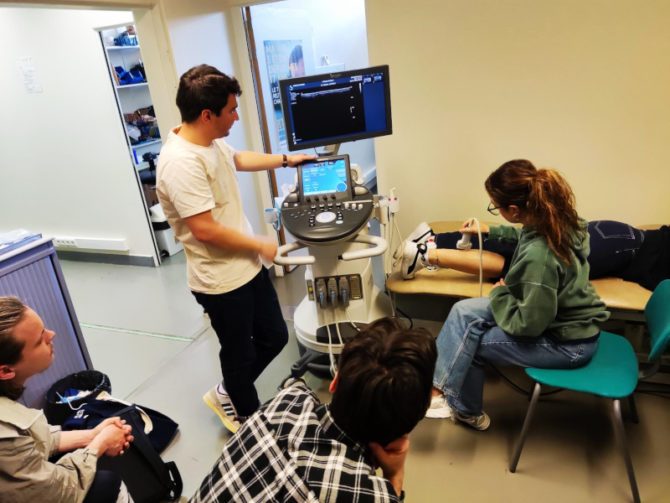 We have built a course that is representative of the diversity of neuromuscular themes at the Institute, taking four elements into account. Firstly, the diversity of the disciplines involved: cellular and molecular biology, physiology and evaluation, imaging, histology and clinical research. We have chosen to involve young researchers, PhD and post-doctoral students, alongside experienced researchers. We also decided not to give lectures, but always to give open, interactive talks that would leave plenty of room for reflection and discussion. Finally, the lecturers were asked not to remain strictly within the laboratory’s theme. In fact, this M1 must be general and transferable, so that students who have done the myology UE can continue in other areas of research if they so wish.
We have built a course that is representative of the diversity of neuromuscular themes at the Institute, taking four elements into account. Firstly, the diversity of the disciplines involved: cellular and molecular biology, physiology and evaluation, imaging, histology and clinical research. We have chosen to involve young researchers, PhD and post-doctoral students, alongside experienced researchers. We also decided not to give lectures, but always to give open, interactive talks that would leave plenty of room for reflection and discussion. Finally, the lecturers were asked not to remain strictly within the laboratory’s theme. In fact, this M1 must be general and transferable, so that students who have done the myology UE can continue in other areas of research if they so wish.
This year, the 30 hours of the course were spread over a week, with interactive lectures in the morning and practical work in half-groups in the laboratories in the afternoon.
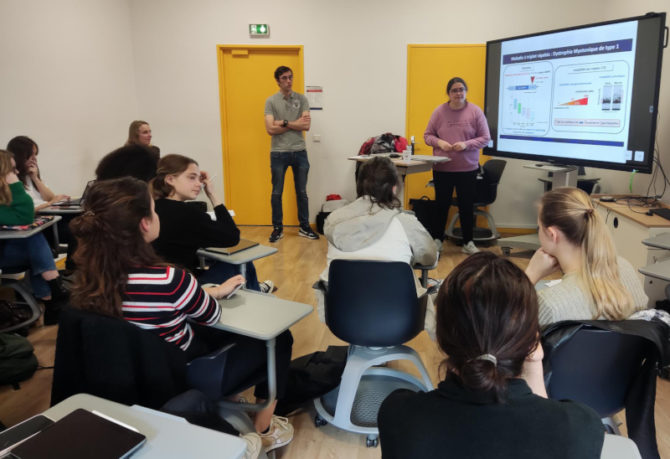 In addition, some of the most motivated students have the option of doing an internship in one of the institute’s laboratories.
In addition, some of the most motivated students have the option of doing an internship in one of the institute’s laboratories.
What feedback did you get?
We asked the students to fill in a questionnaire and give their opinion on various points at the end of the course. It appeared that what they liked most was the practical work format: they were able to use the devices, do experiments on themselves, test equipment or examine the clinical research files, for example. They also really appreciated the lecture format in the morning / practical workshops in the afternoon. Not all of them were planning to go on to do M2 research, and even though they were more likely to go into medical practice, they were very interested to have had this insight into the nature of researchers’ work in myology laboratories.
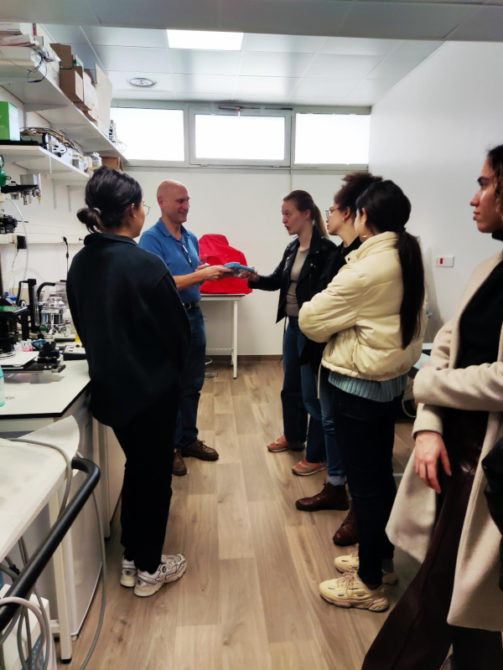 One of the suggestions for next year’s event was to maintain the interactive aspect of the presentations.
One of the suggestions for next year’s event was to maintain the interactive aspect of the presentations.
Will you be taking part in the course again next year?
Yes, and we need to think about how we’re going to organise the practical work for 30 students! We need to maintain a very concrete, practical and interactive format to ensure the same quality. This year we’ve tried out a lot of different things and we’re going to debrief with all the lecturers to see which ones we’re going to keep for next year.
